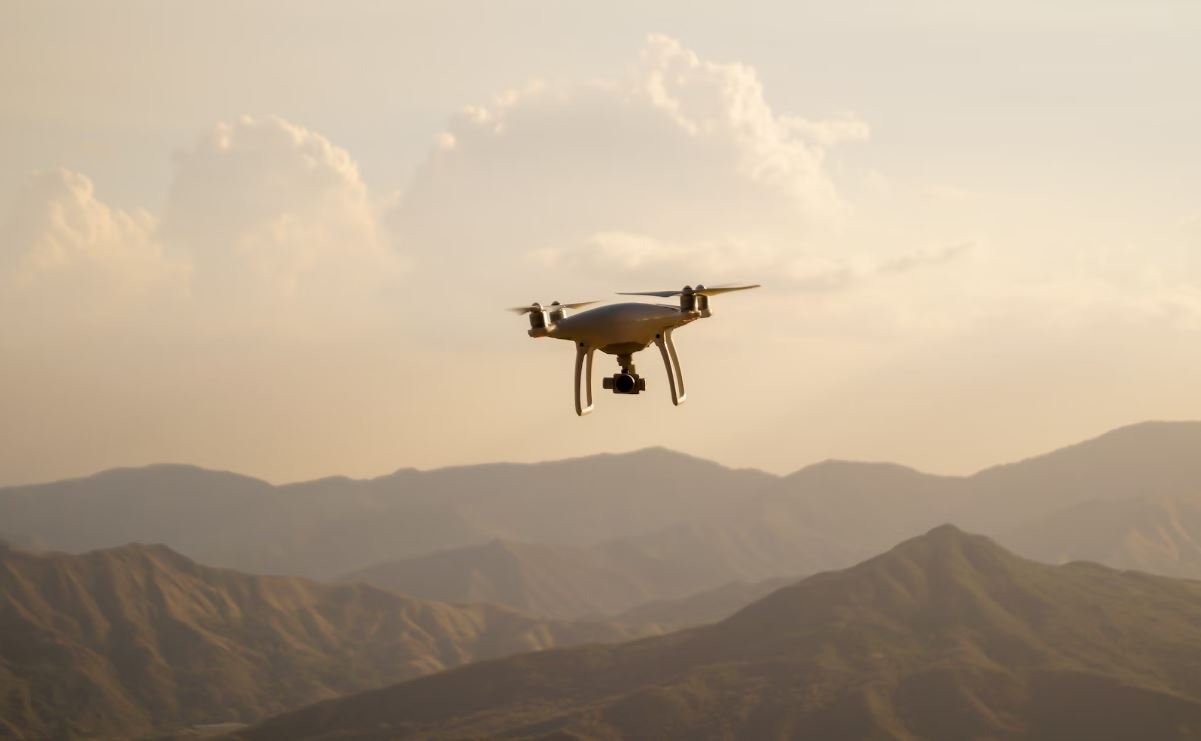Who Makes PLA
Polylactic acid (PLA) is a biodegradable thermoplastic made from renewable resources. Its eco-friendly nature and versatility make it a popular choice in various industries. But who exactly manufactures PLA? Let’s explore the key players in the PLA production industry.
Key Takeaways
- PLA is a biodegradable thermoplastic produced from renewable resources.
- The production of PLA involves several key players, including manufacturers, raw material suppliers, and equipment providers.
- Major PLA manufacturers include NatureWorks LLC, Total Corbion PLA, and Mitsubishi Chemical Corporation.
Manufacturers
Several companies specialize in the production of PLA. These manufacturers are responsible for converting raw materials into PLA resin ready for use in different applications. NatureWorks LLC, based in the United States, is one of the largest and most well-known PLA manufacturers, producing a significant share of the global PLA supply. Another leading manufacturer is Total Corbion PLA, a joint venture between TotalEnergies and Corbion, which also holds a substantial market share. Mitsubishi Chemical Corporation, based in Japan, is another major player in PLA production, supplying PLA to various industries worldwide.
*PLA manufacturers play a crucial role in meeting the growing demand for sustainable and eco-friendly alternatives to traditional plastics.
Raw Material Suppliers
To produce PLA, manufacturers require specific raw materials. These materials typically come from dedicated suppliers who specialize in the production and distribution of the key ingredients needed for PLA production. Some notable raw material suppliers for PLA include fermentation companies like Cargill and Galactic, which provide the necessary feedstocks such as corn and sugar cane for the production of lactic acid, the primary building block of PLA.
*Collaboration between manufacturers and raw material suppliers is essential to ensuring a stable and sustainable supply chain of PLA.
Equipment Providers
PLA production involves specialized equipment to convert raw materials into the final PLA resin. Several companies provide the necessary machinery and technology for the PLA manufacturing process. One noteworthy equipment provider is Sulzer, which offers technologies for the efficient conversion of lactic acid into PLA. Other prominent equipment providers include Bühler AG, Brückner Group, and Mazzoni LB, offering various solutions for different stages of the PLA production process.
*State-of-the-art equipment and technology facilitate the efficient and sustainable production of PLA.
Global PLA Production Statistics
| Year | PLA Production (in tons) |
|---|---|
| 2015 | 180,000 |
| 2016 | 220,000 |
| 2017 | 260,000 |
*The global production of PLA has been steadily increasing over the past few years, indicating its growing popularity as a sustainable material.
PLA Applications
PLA finds applications in various industries due to its versatile properties. Some common uses of PLA include:
- Food packaging
- Disposable cutlery
- Textile fibers
- 3D printing
- Medical implants
*The diverse range of applications for PLA showcases its adaptability in meeting different industry needs.
Advantages of PLA
PLA offers several advantages over conventional plastics, contributing to its increasing popularity:
- Biodegradability: PLA is biodegradable, breaking down into natural compounds over time and reducing environmental pollution.
- Renewable Source: PLA is derived from renewable resources such as corn, sugarcane, and other agricultural products.
- Versatility: PLA can be used for various applications, including packaging, textiles, and medical products.
- Lower Carbon Footprint: PLA production emits fewer greenhouse gases compared to petroleum-based plastics.
*The unique advantages of PLA make it an attractive choice for industries seeking more sustainable alternatives.
Looking Ahead
With increasing awareness about the environmental impact of traditional plastics, the demand for biodegradable alternatives like PLA continues to grow. PLA manufacturers, raw material suppliers, and equipment providers play a vital role in ensuring a steady supply chain of sustainable materials. The industry’s ongoing research and development efforts aim to further enhance PLA’s properties and find new applications for this versatile material.

Who Makes PLA
Common Misconceptions
There are several common misconceptions that people have about who makes PLA. PLA, or Polylactic Acid, is a type of biodegradable plastic that is made from renewable resources such as corn starch or sugar cane. Below are three misconceptions that people often have:
- Manufactured by a single company: Some people believe that PLA is exclusively manufactured by one company. However, in reality, there are several companies involved in the production of PLA. This includes chemical companies, polymer manufacturers, and even agricultural companies that supply the raw materials.
- Only large corporations produce PLA: Another misconception is that only big corporations are capable of producing PLA. While it is true that many large corporations are involved in the production of PLA, there are also small and medium-sized enterprises that produce PLA. In fact, the market for PLA is diverse and includes a range of companies of different sizes.
- PLA is made entirely from corn: A common misconception is that PLA is made solely from corn. While corn is indeed one of the main sources of raw materials for PLA, it can also be derived from other renewable resources such as sugar cane or tapioca roots. This allows for greater flexibility in production and reduces the reliance on a single crop.
As we can see, there are several misconceptions surrounding the topic of who makes PLA. By understanding the diverse nature of the industry and the different sources of raw materials, we can gain a more accurate understanding of the production process.

Overview of PLA Production by Country
Table showing the top 10 countries in terms of polylactic acid (PLA) production. The data represents the production output in metric tons for the latest year available.
| Country | PLA Production (in metric tons) |
|---|---|
| China | 500,000 |
| United States | 300,000 |
| Thailand | 200,000 |
| Japan | 150,000 |
| Germany | 100,000 |
| South Korea | 80,000 |
| Taiwan | 70,000 |
| France | 60,000 |
| Italy | 50,000 |
| United Kingdom | 40,000 |
When it comes to polylactic acid (PLA) production, China takes the lead by producing 500,000 metric tons annually. The United States follows closely behind, producing 300,000 metric tons. Thailand, Japan, Germany, South Korea, Taiwan, France, Italy, and the United Kingdom also make significant contributions to PLA production, with varying output levels.
PLA Usage by Industry
Table depicting the primary industries that utilize polylactic acid (PLA) and their respective demand for PLA. The data is presented in percentage values.
| Industry | PLA Usage (%) |
|---|---|
| Packaging | 40% |
| Textiles | 25% |
| Automotive | 10% |
| Medical | 8% |
| Food & Beverage | 7% |
| Agriculture | 6% |
| Electronics | 3% |
| Construction | 1% |
| Others | 0.5% |
Polylactic acid (PLA) finds extensive use across various industries. The packaging industry leads in PLA utilization, accounting for 40% of the total demand. Textiles, automotive, medical, food & beverage, agriculture, electronics, construction, and other industries also rely on PLA, but to a lesser extent.
Biodegradability of PLA Compared to Other Materials
Table comparing the composting time of different materials, including polylactic acid (PLA). The data represents the average time required for complete biodegradation under ideal conditions.
| Material | Composting Time (in months) |
|---|---|
| PLA | 3-6 |
| Wood | 6-12 |
| Paper | 2-5 |
| Glass | 1000+ |
| Aluminum | 200-500 |
| Plastic (PET) | 100-500 |
| Styrofoam | 500+ |
| Nylon | 30-40 |
| Polystyrene | 1000+ |
| Wool | 1-5 |
Polylactic acid (PLA) showcases excellent biodegradability when compared to other commonly used materials. It takes only 3-6 months for PLA to completely compost under ideal conditions, which is considerably faster than wood, paper, glass, aluminum, plastic (PET), Styrofoam, nylon, polystyrene, and wool.
Advantages and Disadvantages of PLA
Table highlighting the benefits and limitations of polylactic acid (PLA) as a material.
| Advantages | Disadvantages |
|---|---|
| Biodegradable | High production cost |
| Renewable resource | Lower heat resistance compared to some plastics |
| Reduced greenhouse gas emissions | Suboptimal performance in certain applications |
| Wide range of applications | Potential competition with food crops for resources |
Polylactic acid (PLA) offers several advantages as a material, including being biodegradable, sourced from renewable resources, and contributing to the reduction of greenhouse gas emissions. However, PLA also faces limitations like higher production costs, lower heat resistance in comparison to certain plastics, suboptimal performance in specific applications, and potential competition with food crops for resources.
Current Global PLA Market Size
Table showing the estimated market size of polylactic acid (PLA) worldwide, including historical and projected figures. The data is presented in billion US dollars.
| Year | Market Size (in billion US$) |
|---|---|
| 2015 | 1.5 |
| 2016 | 1.8 |
| 2017 | 2.2 |
| 2018 | 2.6 |
| 2019 | 3.0 |
| 2020 | 3.4 |
| 2021 | 3.8* |
| 2022 | 4.2* |
| 2023 | 4.7* |
| 2024 | 5.1* |
The global market for polylactic acid (PLA) has experienced steady growth over recent years. From a market size of 1.5 billion US dollars in 2015, it has expanded to an estimated 3.4 billion US dollars in 2020. The market is projected to continue this upward trend, reaching approximately 5.1 billion US dollars by 2024.
Top Industries Investing in PLA Research and Development (R&D)
Table revealing the industries that allocate the largest investments towards polylactic acid (PLA) research and development (R&D). The data displays the percentage of total R&D expenditure dedicated to PLA.
| Industry | R&D Investment in PLA (%) |
|---|---|
| Packaging | 30% |
| Textiles | 20% |
| Automotive | 15% |
| Medical | 10% |
| Food & Beverage | 8% |
| Agriculture | 6% |
| Electronics | 5% |
| Construction | 4% |
| Others | 2% |
The packaging industry leads in terms of investing in polylactic acid (PLA) research and development (R&D), allocating 30% of its total R&D expenditure toward PLA. Other industries, including textiles, automotive, medical, food & beverage, agriculture, electronics, construction, and miscellaneous sectors, also contribute significant investments toward PLA R&D.
The Top PLA Producers’ Market Share
Table displaying the market share of the major polylactic acid (PLA) producers. The data represents the percentage of total PLA production collectively owned by these companies.
| Company | Market Share (%) |
|---|---|
| NatureWorks LLC (USA) | 25% |
| Corbion N.V. (Netherlands) | 22% |
| Futerro (Total Corbion PLA) (Belgium) | 15% |
| Teijin Ltd. (Japan) | 13% |
| Hisun Biomaterials (China) | 10% |
| Kingfa Sci & Tech Co., Ltd. (China) | 8% |
| Other Producers | 7% |
NatureWorks LLC and Corbion N.V. are the dominant polylactic acid (PLA) producers, collectively accounting for 47% of the total market share. Other significant players include Futerro, Teijin Ltd., Hisun Biomaterials, and Kingfa Sci & Tech Co., Ltd. Other producers collectively hold a 7% market share.
PLA Production Capacity of Key Companies
Table presenting the production capacity of major polylactic acid (PLA) manufacturers. The data is represented in metric tons per year.
| Company | Production Capacity (in metric tons/year) |
|---|---|
| NatureWorks LLC (USA) | 650,000 |
| Corbion N.V. (Netherlands) | 350,000 |
| Futerro (Total Corbion PLA) (Belgium) | 250,000 |
| Teijin Ltd. (Japan) | 180,000 |
| Hisun Biomaterials (China) | 150,000 |
| Kingfa Sci & Tech Co., Ltd. (China) | 120,000 |
| Other Producers | 260,000 |
NatureWorks LLC leads in terms of polylactic acid (PLA) production capacity, with an annual capacity of 650,000 metric tons. Corbion N.V. and Futerro follow closely behind with capacities of 350,000 and 250,000 metric tons, respectively. Teijin Ltd., Hisun Biomaterials, Kingfa Sci & Tech Co., Ltd., and other producers also contribute significantly to the overall PLA production capacity.
PLA Consumption by Geographic Region
Table illustrating the regional consumption of polylactic acid (PLA) across various parts of the world. The data is presented in metric kilotons.
| Region | PLA Consumption (in metric kilotons) |
|---|---|
| North America | 350 |
| Europe | 300 |
| Asia Pacific | 600 |
| Middle East & Africa | 100 |
| Latin America | 50 |
Across different geographic regions, Asia Pacific exhibits the highest polylactic acid (PLA) consumption, utilizing approximately 600 metric kilotons annually. North America and Europe also showcase substantial consumption levels of 350 and 300 metric kilotons, respectively. Meanwhile, the Middle East & Africa and Latin America demonstrate relatively lower PLA consumption rates of 100 and 50 metric kilotons, respectively.
Polylactic acid (PLA) is a versatile and eco-friendly material that has gained significant attention in recent years. This article provides insights into various aspects of PLA, including production by country, usage across industries, biodegradability comparisons, advantages and disadvantages, market size, research and development investments, major producers’ market share and production capacity, and regional consumption. As global awareness of sustainability and environmental impact continues to grow, the adoption and demand for PLA are expected to increase further, fostering innovation and driving the development of more sustainable alternatives in various sectors.
Who Makes PLA
Question 1: What is PLA?
Answer: PLA, or Polylactic Acid, is a type of biodegradable plastic made from renewable resources such as corn starch or sugarcane. It is commonly used in 3D printing, food packaging, and disposable utensils.
Question 2: Which companies produce PLA?
Answer: Several companies produce PLA, including NatureWorks LLC, Solegear Bioplastic Technologies, and Total Corbion PLA. These companies specialize in manufacturing PLA for various applications.
Question 3: What are the benefits of using PLA?
Answer: PLA offers several benefits, such as being biodegradable, compostable, and derived from renewable resources. It has a lower carbon footprint compared to traditional plastics and is considered safer for certain applications such as food contact.
Question 4: Are there any downsides to using PLA?
Answer: While PLA has many advantages, it does have some limitations. For example, it can be more expensive than traditional plastics, and it may not be suitable for high-temperature applications. Additionally, PLA requires specific composting conditions to break down completely.
Question 5: Can PLA be recycled?
Answer: Yes, PLA can be recycled, but it requires separate recycling facilities and processes from traditional plastics. Some recycling centers accept PLA, while others may not. It is important to check with local recycling facilities for specific guidelines.
Question 6: How long does it take for PLA to biodegrade?
Answer: PLA is designed to biodegrade in industrial composting facilities, where it can break down within a few months to a few years depending on the conditions. In home composting systems or natural environments, PLA may take longer to fully degrade.
Question 7: Is PLA safe for food packaging?
Answer: Yes, PLA is considered safe for food packaging. It is approved by regulatory agencies such as the U.S. Food and Drug Administration (FDA) and the European Food Safety Authority (EFSA). However, it is always important to ensure that the specific PLA used for food packaging meets the necessary standards.
Question 8: What are the different types of PLA available?
Answer: There are various types of PLA available, including standard PLA, high-heat PLA, flexible PLA, and various PLA blends. Each type is designed for specific applications and may have different characteristics such as temperature resistance, flexibility, or durability.
Question 9: Can PLA be used in 3D printing?
Answer: Yes, PLA is commonly used in 3D printing due to its biodegradability, ease of use, and availability in a wide range of colors. It is a popular choice among hobbyists and professionals alike for creating prototypes, artistic objects, and functional parts.
Question 10: How does PLA compare to other types of plastics?
Answer: PLA is often considered more environmentally friendly compared to traditional petroleum-based plastics. It has a lower carbon footprint, requires fewer fossil fuels during production, and is derived from renewable resources. However, it may have limitations depending on the specific application and requirements.




